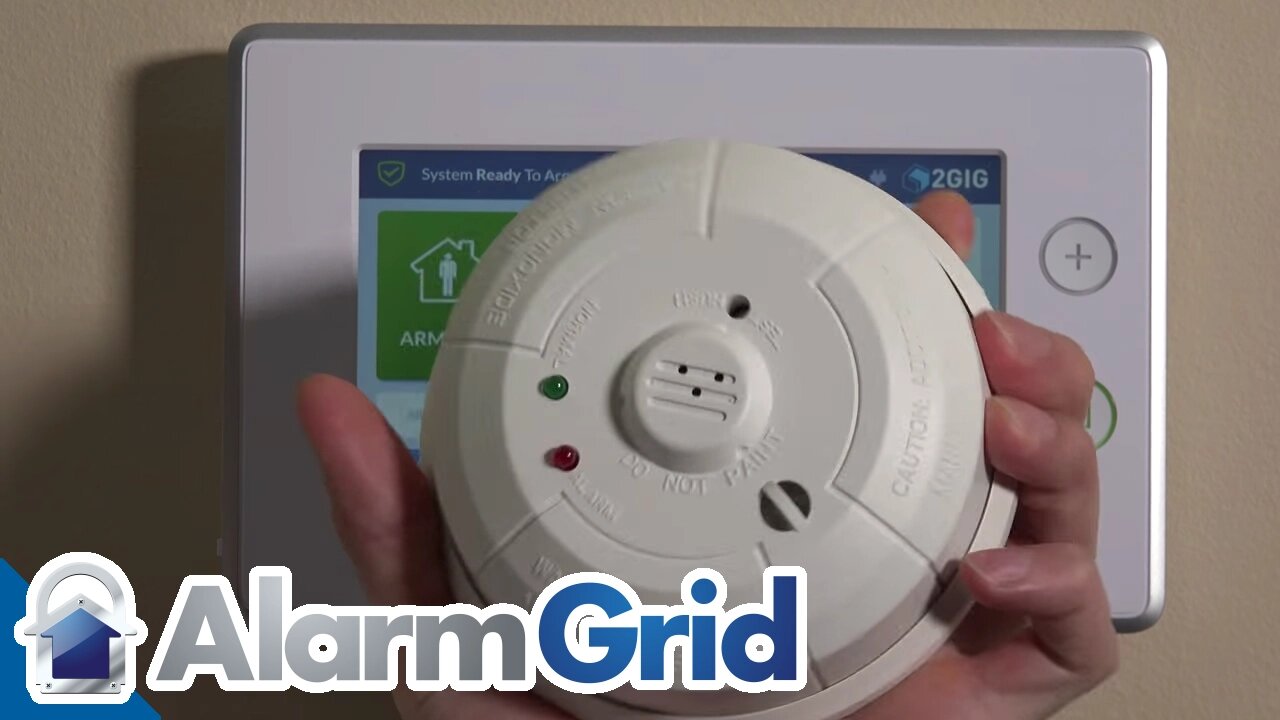Premium Only Content

Honeywell 5800CO: Program to 2GIG GC3
This video guide shows you how the Honeywell 5800CO can be connected to your 2GIG GC3 system to provide potentially life-saving CO detection.
Sensors on the doors and windows can protect your family from intruders, but there’s another potential threat which is much harder to prevent. Colorless and odorless, carbon monoxide can creep into your home undetected. Even short-term, low-level exposure can cause serious injury and death.
Honeywell’s 5800CO is a wireless carbon monoxide detector which can be used with the 2GIG GC3 security system. This video tutorial explains how the detector works and how to connect it to your alarm system. There’s also an important warning about the proper way to test the device.
This probably won’t be the only carbon monoxide detector in your home. Most building codes require plug-in CO detectors for the wall outlets. So you’ll use the 5800CO as a back-up.
One major advantage of connecting a CO detector to your home security system is the added safety provided by a professional monitoring service. Even if you’re unable to respond to the alarm for some reason, the fire department will still be notified.
Once connected to the security system, a CO alarm is a “must report.” When the central monitoring station receives a CO alert, they’ll call the local fire department immediately. This is one of the few alarms where the homeowner is not the first person contacted.
Plus, a CO alarm can’t be canceled. Even if you get on the phone right away to the fire department, they still need to examine the location. Of course, most fire departments will tolerate a false alarm or two, but you still want to be careful when setting up and testing the device.
Using your Installer Code, you set the device up in a zone, similar to how you set up a break-in sensor. Select 24 Hour Carbon Monoxide and then Existing CO Detector. The video shows you how to navigate the system to set up the device.
Before mounting the device on a wall, you’ll want to install a new battery. When the detector is first used, you’ll need to pull a cardboard tab out of the battery housing. The video also shows you how to properly insert a battery into the detector.
In order to test the device, you first need to contact the monitoring company. They’ll put your system into test mode. Then you can follow the testing steps as shown in the video. The monitoring company will know you’re testing the device so the fire department won’t be notified.
Using a pen or small screwdriver, poke the test button on the device. The alarm will sound and the control panel will flash red. You’ll need to enter your cancel code. Then you can contact the monitoring agency to make sure the alarm signal reached them properly and to take your system out of test mode.
Carbon monoxide is extremely dangerous. While your home is likely already somewhat protected, connecting a CO detector to your alarm system provides an important layer of additional security.
-
 3:39
3:39
Alarm Grid Home Security DIY Videos
1 year agoQolsys IQ Panel 4: Using Dual Path Monitoring
21 -
 LIVE
LIVE
RiftTV
2 hours agoCON INC: We Should All Just FORGET About Epstein | The Rift | Dinesh D’Souza, Lauren Witzke + More
609 watching -
 LIVE
LIVE
LIVE WITH CHRIS'WORLD
1 hour agoLIVE WITH CHRIS’WORLD - I Have So Many Questions Right Now
54 watching -
 58:21
58:21
BonginoReport
3 hours agoTrump Deepens MAGA’s Epstein Divide - Nightly Scroll w/ Hayley Caronia (Ep.91) - 07/16/2025
110K61 -
 LIVE
LIVE
RalliedLIVE
5 hours ago $0.85 earned10 WINS WITH THE SHOTTY BOYS
88 watching -
 LIVE
LIVE
Playback Request Live
1 hour agoLevel Up: Our First Live Performance ft. Lady Desiree
126 watching -
 LIVE
LIVE
Blabs Games
43 minutes agoBig Bad Uno Plays | Noob Plays
46 watching -
 LIVE
LIVE
The Jimmy Dore Show
2 hours agoTrump Attacks His OWN Supporters As Democrat Dupes Over Epstein! Columbia University CAVES to Trump!
7,614 watching -
 1:25:13
1:25:13
Kim Iversen
3 hours agoColonel Macgregor: The Pentagon Has No Strategy, Only Targets
70.8K58 -
 12:32
12:32
JapaNomad - Video Tours
13 hours agoR35 GT-R POV Drive in Tokyo 🗼Shinjuku | Pure Car ASMR | No Music | No Voice | 4K HDR
3.18K2